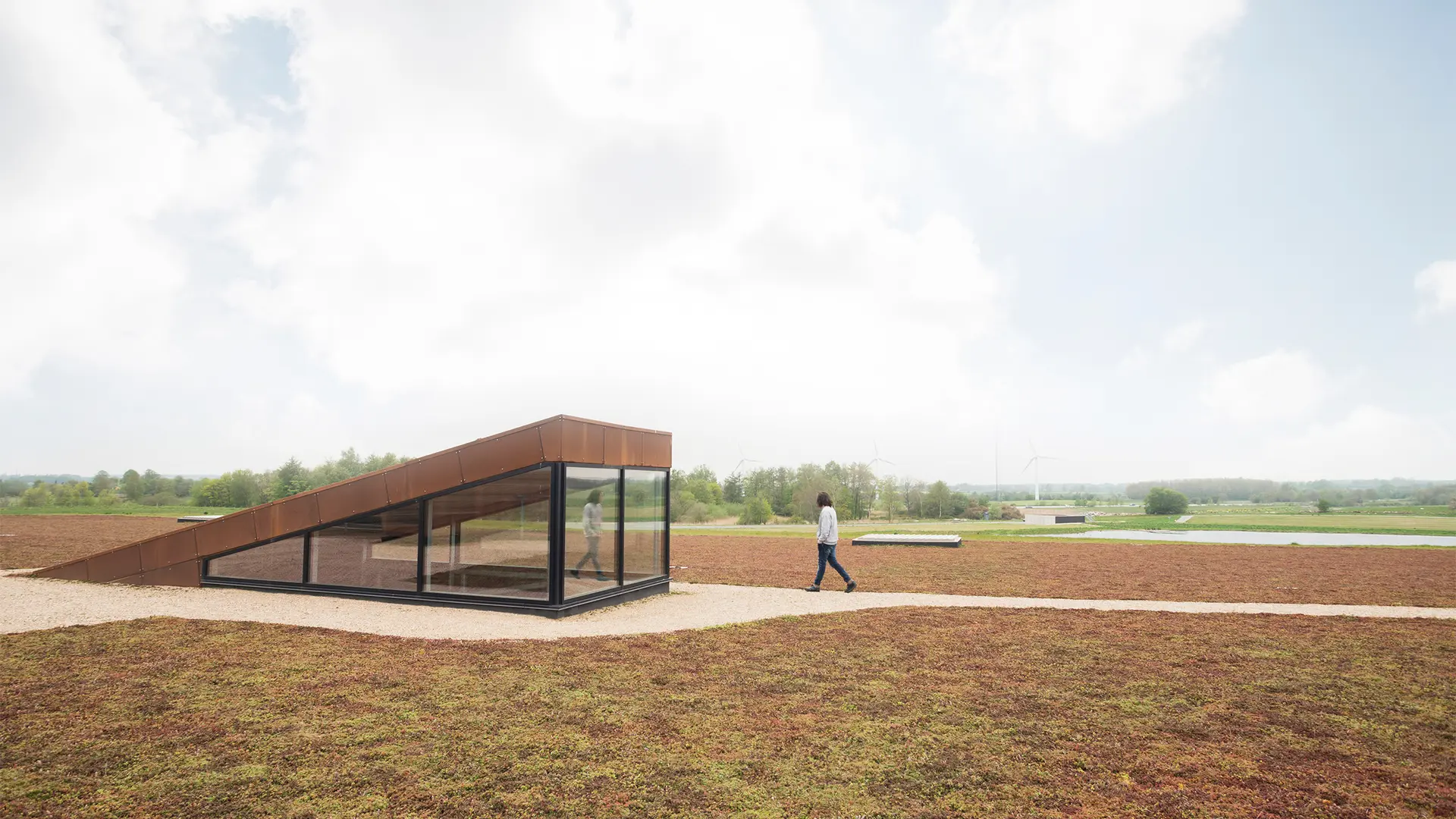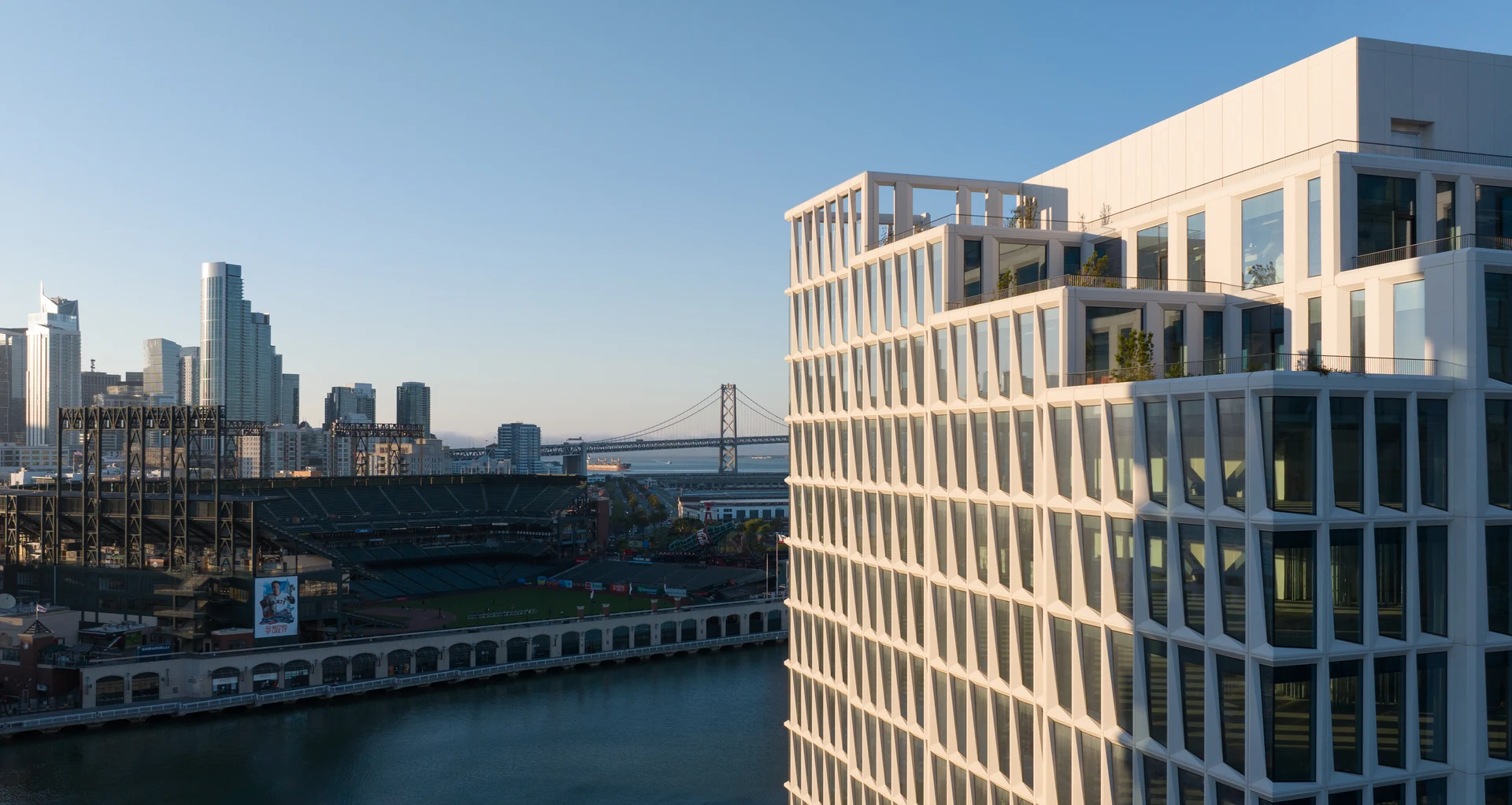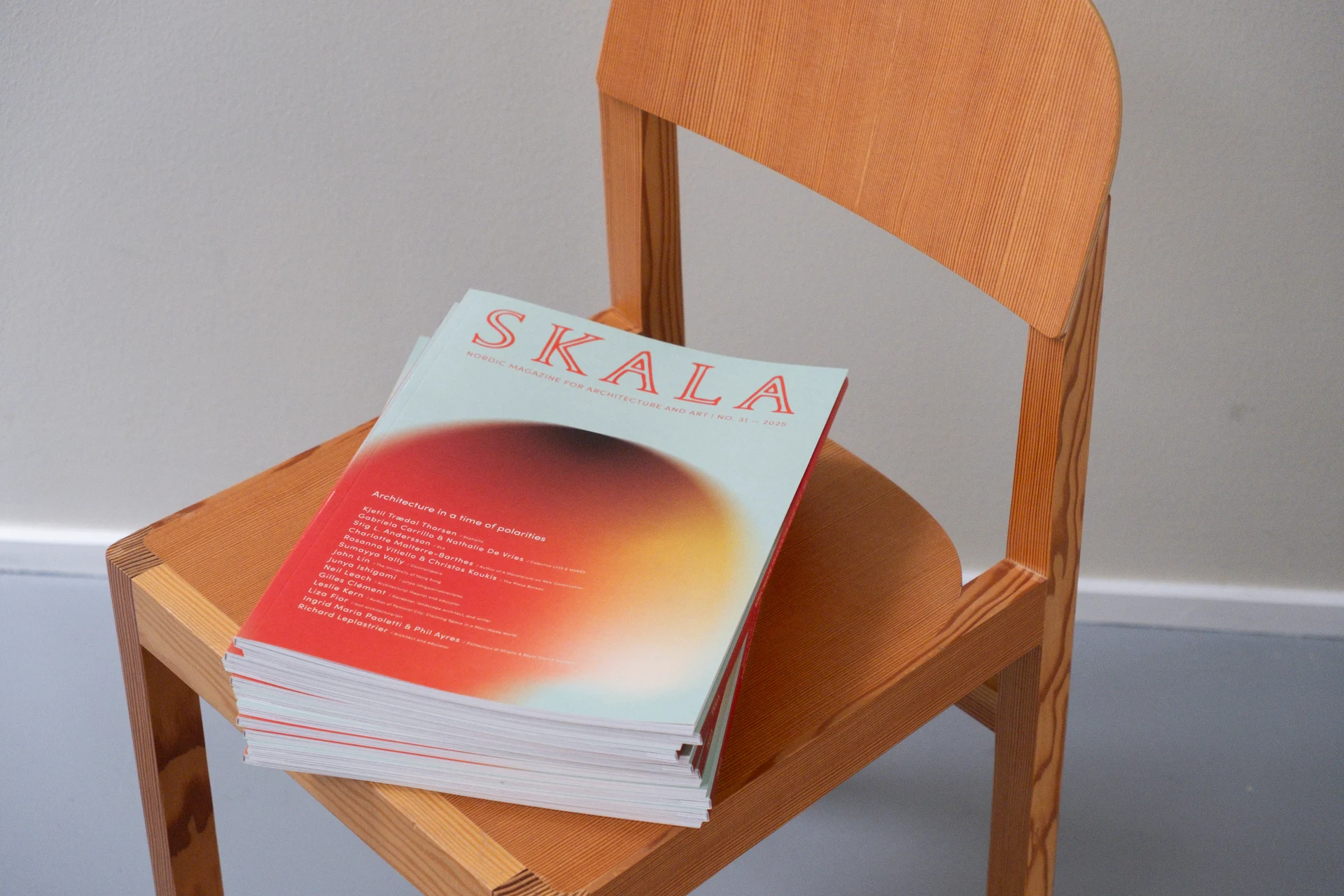In Denmark, a new water treatment plant is fit for a picnic

Part park, part utility, the green-roofed water treatment plant Solrødgaard in Hillerød puts the community face to face with their use of resources.
Nearly two-thirds of the world’s population experience severe water scarcity during at least one month of the year. As climate change and global crowding intensify, this figure will only become more severe.
The Solrødgård Climate and Environment Park, serving the city of Hillerød in northern Zealand, seeks to shine a brighter spotlight on the global challenge of resource use. Developed from a 50-hectare, 1 billion-DKK masterplan, the park aims to open community dialogue on resource use and climate awareness by creating public appeal within the municipal infrastructure. Here, a recycling center, wastewater treatment plant and administrative facility neighbor walking trails, a birdwatching tower, and a roosting hotel for local bats. By weaving recreational space into public utilities, the park creates a unique space where visitors can gain a natural, firsthand exposure to the cycle of natural resources within the community. The design extends a critical conversation on resource scarcity, which disproportionately affects developing communities. Henning Larsen contributes to this mission with their design for the Solrødgård Water Treatment Plant, embedding the facility within an accessible earthen framework.
The Solrødgård Water Treatment Plant appears to rise directly from the surrounding landscape, its inner workings concealed under a grass roof. While a web of pedestrian paths wander across the roof, a landscaped corridor creates a channel through the center of the plant, lined with floor-to-ceiling glass facades. Visitors can peer through skylights on the roof and these central glass facades into the plant’s processing wing and filtration facilities, watching as the plant treats 15,000 cubic meters of wastewater each day. For Marie Ørsted Larsen, Senior Landscape Architect at Henning Larsen, the design concept allows the community to connect with their own use of resources, while minimizing the visual and olfactory presence often associated with water treatment plants.
“The rooftop paths give a view over the rest of the park, but the central pathway is really where visitors can get an idea of how their community’s water cycle works,” Larsen says. “It’s symbolic of us cutting into the landscape to look within, creating a contrast between the natural water cycle and the constructed process that supports our communities.”
A small creek trickles through this central channel, defining a narrow garden that can be planted to demonstrate how natural foliage cleans and filters groundwater. For visitors passing through, this installation offers an interactive contrast to the surrounding water treatment plant, prompting reflection on the function and necessity of the public utility.
The Solrødgård Water Treatment Plant is capable of expanding its processing capacity to support future growth in and around Hillerød and is capable of recycling phosphorus and producing biomass heat energy from the wastewater. Future communities will be able to explore a landscape that provides recreation, a connection to nature, and an everyday education in climate awareness.
Solrødgård Water Treatment Plant opened in 2017. As part of the larger Solrødgård Climate and Environment Park, Henning Larsen’s work emerges in collaboration with Gottlieb Paludan, C.F. Møller, Jakobsen & Blindkilde, Orbicon, DHI and Hillerød Spildevand.



